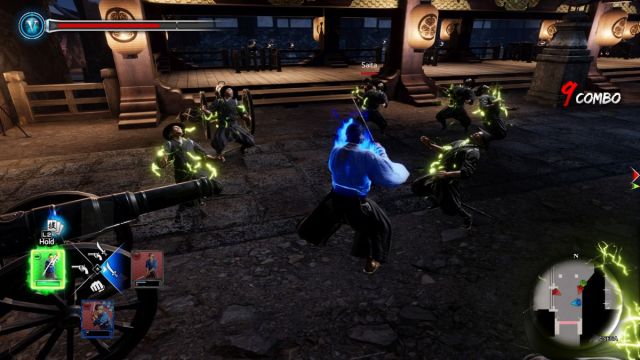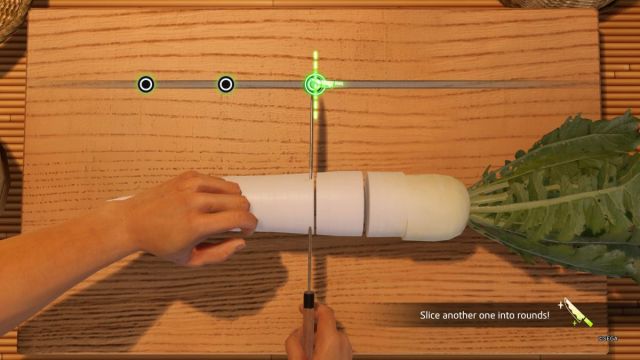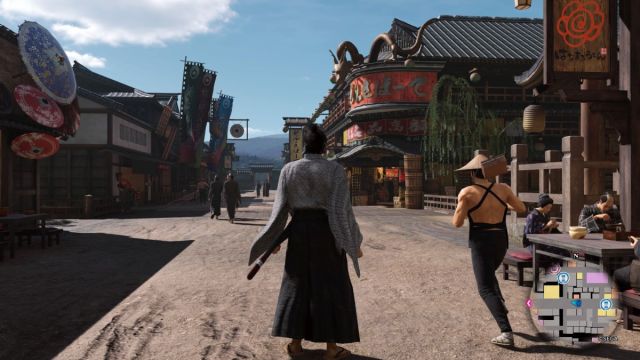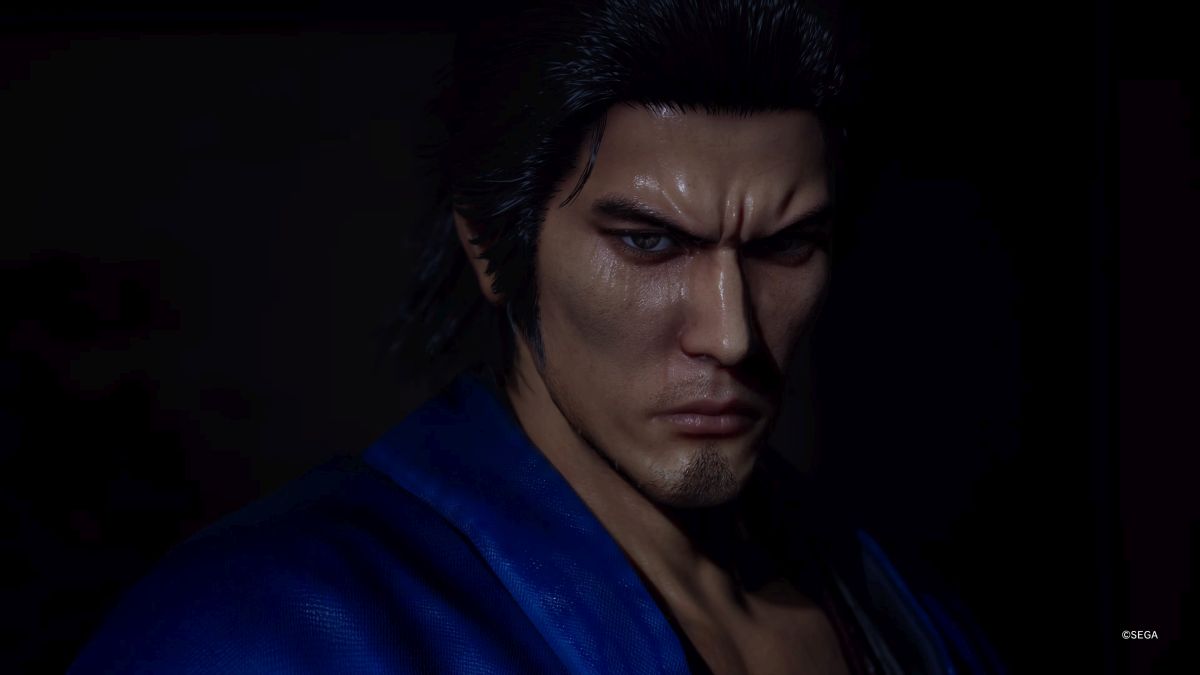The stage of history
Like a Dragon has seen its main series’ star continually rise in the west, and now we’re getting a remake of one that never managed to make it over. Like a Dragon: Ishin! is a remake of the 2014 game, tackling historical fiction through the lens of its characters, humor, and action.
While the anachronistic premise can and does lead to some outlandish moments, the good news is that for the most part, Ishin comes together well. Aside from technical hitches and some tedium in the main story, Like a Dragon: Ishin! is an enjoyable romp through history with all the bizarre slice-of-life moments and dramatic fights you could want.
Like a Dragon: Ishin! (PS4, PS5 [reviewed], Xbox One, Xbox Series X|S, PC)
Developer: Ryu Ga Gotoku Studio
Publisher: Sega
Released: February 21, 2023
MSRP: $59.99
Blade of vengeance
Ishin follows the story of Sakamoto Ryoma, a swordsman returning home to Tosa from his training in Edo. Ryoma is quickly reunited with adoptive father Yoshida Toyo and sworn brother Takechi Hanpeita, as the three collaborate to overthrow the class system of the land. A masked assassin interrupts the events, however. Framed for murder, Ryoma flees Tosa and heads to Kyo under the guise of Saito Hajime, seeking the attacker and their unique fighting style.
For those who aren’t keenly familiar with the history of Japan, Ishin does take place in and portray the events surrounding the end of the Edo period. But it does so by obviously dramatizing events, intertwining and supposing characters in the ways historical fiction does, and using Like a Dragon (née Yakuza) characters as stand-ins for the figures of the era. It’s The Muppets Christmas Carol take on history, but instead of Kermit the Frog playing Bob Cratchit, it’s Kazuma Kiryu’s likeness portraying Sakamoto Ryoma / Saito Hajime.
This means that, much like The Muppets, every character pulls double duty. Okita Soji is their own character, but is also a representation of Majima Goro, Like a Dragon‘s mad dog whose penchant for hunting Kazuma Kiryu carries over into Ishin. Normally, these ideas would clash into each other and cause friction, but in Like a Dragon: Ishin!, the characters feel wholly their own while still providing tons of fodder for long-time series fans. Ryoma might be the best example of this, carrying on as the well-meaning protagonist constantly caught up in increasingly bizarre situations. But it all, somehow, works.

The main story itself can drag a bit, especially in the middle chapters. I was sure that, by a certain point in the game, I had worn a virtual trail between the Shinsengumi barracks and Ryoma’s room at the Teradaya Inn. And while the simmering tension of Ryoma searching for his mark in the wolves’ den is exciting, the constant run-arounds these events send you on can feel tedious.
When it shifts into gear though, Ishin hits the same speeds that other Like a Dragon series entries reach. While no glorious back tattoos are bared, the weaponry of this era makes for some dramatic moments nonetheless. Seeing swords clash and the classic boss text slam onto the screen with flames erupting, still hits just as hard. Overall, Ishin strikes a good balance of personal drama and political intrigue, while still finding just the right moment to let the music kick in and an absolutely chaotic brawl to break out.
Stance switching
When fights break out, Ryoma has a pretty decent swathe of stances to use against enemies. Sure, there’s the Brawler stance and its fists. But you can also employ a sword or gun, or both in the Wild Dancer form, highlighting the changing tides of fighting in this era.
Each stance brings something different to the table, and they felt both varied and viable enough that I kept swapping forms throughout my playthrough. Sure, the Swordsman form felt the most narratively appropriate to master and level up first; but Brawler gave me some really fun tools, and the gun-wielding stance was a go-to for dealing with the random encounters as I ran around the world. Swords may have been my staple, but I enjoyed spending time mastering the different styles and learning new moves at the dojos located around Kyo.
Boss fights are where the combat clicks the best, as the action zooms in and focuses on the tense clash between Ryoma and his opponent. I was less enthused about some battles in enclosed spaces, where the camera struggled to track the action. In some areas, the cramped hallways and rooms became their own enemy, as I managed the camera alongside a swarm of enemies. And though the Heat Actions are here and effective as always, even comedic at times, I did find some repetition in them that lessened my desire to keep hitting the Triangle button.

The real shake-up is in the Trooper Cards, which you can build up over the course of the story and act as a second inventory of boons to draw from in fights. It’s an interesting system with some powerful results. Even just the starter cards Ryu Ga Gotoku Studio hands to you are solid through the game, from the quick healing and damage-boosting effects to a chain lightning move that would tear through big groups.
Building these abilities and fighters up is one of the side activities I’d like to have spent more time with, though it ultimately felt like a way to quickly out-pace the game’s difficulty curve. I never even managed to find some of the rare ones, let alone any celebrity-themed cards, but the ones I had felt like trump cards in the right situation. They weren’t insta-win effects, but I did prefer to use my own weapons to win fights. It feels more thematically appropriate, you know? But levelling and building up those Trooper Cards feels like one of LIke a Dragon: Ishin‘s main post-game sinks that I could fall into.
Another life
Other Like a Dragon games have had plenty of substories and side activities to get lost in, and Ishin is no different. A benefit of the walking back-and-forth Ishin demands of Ryoma is that it allows him, and the player, to stumble on all the different side activities and bonds that can fill up this map. I don’t know if Kyo ever felt as familiar as Kamurocho, but it certainly has a similar degree of life and vigor to it.
Between story missions, I’d chop wood or wait in line for infamous inari sushi. I’d tally up the prize tickets I could, turn them in, hoping for a decent roll at the booth. During my time in Like a Dragon: Ishin!, I helped a courier keep his business alive, taught a man to fish, slashed cannonballs with my sword, and gave a madam a cucumber. It it exactly the kind of bizarre but oddly heartwarming substories you’d be looking for, here.

The largest of the side activities is easily the Another Life segment, which sees Ryoma building and maintaining a rural homestead with the orphaned Haruka. This mostly serves as a time and money sink, with some good results if you’re looking to have some decent health recovery options in the late game. But I did enjoy the peace and quiet of Another Life, and building this home up with my steadily accruing Virtue felt rewarding. It’s no Stardew replacement, but it’s a nice change of pace, and certainly one I’m more likely to go back over other minigames (looking at you, Brothel drinking challenge).
True to life
One area in which Like a Dragon: Ishin! suffered in my experience, though, was the technical department. Playing on PlayStation 5, I was surprised to discover some heavy performance dips when using certain abilities or fighting in certain foggy effects. (Those who may be familiar with a certain fistfight in a bathhouse will know the areas I’m talking about.)
Some of these issues were resolved in my pre-release playthrough, while others were not. We’re keeping an eye on it and I’ll make a note here of any substantial changes, but even with some of the patches that rolled out, I still ran into some weird technical hiccups. Nothing was overall game-breaking, but some were certainly jarring enough to note.

Aside from those issues, I think Like a Dragon: Ishin! excels in the big moments. It’s a historical drama that, much like Okita / Majima, loves when it gets to let loose and go crazy. Some of the later scenarios see some absolutely wild interpretations of both characters and events, and you can tell the RGG team had some fun imagining how these characters would interact in their new roles.
And, much like the Muppet-driven movie I keep referencing, Ishin knows how to balance the comedic and dramatic in equal measure. I don’t know that the running love plot worked too well for me, but most aspects of the story kept me driving towards the truth alongside Ryoma. Big moments can hit pretty hard, and little jokes or even just phrasing from the excellent localization kept me chuckling and slamming the Share button.
A different breed of dragon
The Like a Dragon series is going through some shake-ups, as it not only shifts away from the Yakuza theming but adds a new protagonist to the mix, too. In a way, Ishin feels like a celebration of the series up this point, a recognition that these characters are memorable enough to make up a cast of characters in this pseudo-stage play of history. Adding even more faces from Yakuza games in the series, especially the popular Yakuza 0 and Yakuza: Like a Dragon, as part of the remake emphasizes this even more.

And while there are some hitches, the Ishin remake can look absolutely splendid at times too. Cutscenes especially had me surprised, as little details like the rain falling on characters or a tear running down one’s cheek floored me. Overall, this was a title well-deserving of a remake, and it got a solid one.
If you’re a newcomer, you’ll probably appreciate just the zany mix of comedy and action that defines the series, and is still present here. Long-time fans will still find the things they like about this series in Ishin, too. While there are some setbacks, it’s fair to say Like a Dragon: Ishin! is a good entry in the series, hitting the same highs you’d hope for and filled with just the right balance of heart and laughter that made the series stand out in the first place. Ryoma’s story has finally come west, and it’s well worth experiencing if you’re a fan of Ryu Ga Gotoku’s brawlers.
[This review is based on a retail build of the game provided by the publisher.]









